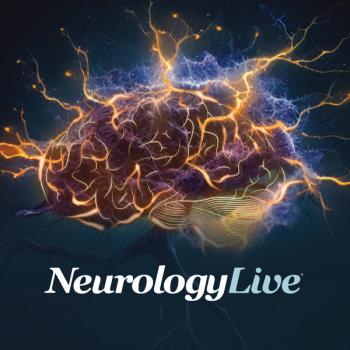
Omaveloxolone is an oral, once-daily medication indicated for the treatment of Friedreich’s ataxia in adults and adolescents aged 16 years and older in both the United States and the European Union.

Marco Meglio, Assistant Managing Editor for NeurologyLive, has been with the team since October 2019. Follow him on Twitter @marcomeglio1 or email him at [email protected]

Omaveloxolone is an oral, once-daily medication indicated for the treatment of Friedreich’s ataxia in adults and adolescents aged 16 years and older in both the United States and the European Union.

After showing inconsistent results in previous trials, AVP-786 did not demonstrate statistically significant outcomes vs placebo on the primary outcome of change in Cohen-Mansfield Agitation Inventory.

TAK-861, an orexin receptor 2 agonist, demonstrated efficacy and safety in a phase 2b trial for narcolepsy type 1.

Topline results from the RESCUE trial indicate that RNS60, an anti-inflammatory agent, demonstrates safety and potential efficacy in acute ischemic stroke.

New findings from the TIMELESS trial suggest that tenecteplase within 4.5 to 24 hours post-stroke might benefit certain subgroups, despite overall neutral outcomes.

Using a cohort of more than 20,000 patients with ischemic stroke, those on AI-CDSS experienced less vascular events of hemorrhagic stroke, myocardial infarction, or vascular death.

Test your neurology knowledge with NeurologyLive®'s weekly quiz series, featuring questions on a variety of clinical and historical neurology topics. This week's topic is neuromuscular disorders, and specifically, Duchenne muscular dystrophy.

Tirofiban treatment in acute ischemic stroke reduced early neurological deterioration compared to oral antiplatelet therapy alone, warranting further investigation.

Elezanumab's biomarker analysis in stroke patients underscores its potential as a neuroprotective therapy for acute ischemic stroke management.

Over a 90-day period, investigators observed significantly lower functional outcomes on modified Rankin Scale and similar rates of bleeding and death when compared with control.

Mind Moments®, a podcast from NeurologyLive®, brings you an interview with Ignacio Mata, PhD. [LISTEN TIME: 21 minutes]

IPX203, a novel, oral formulation of carbidopa/levodopa, had its new drug application supported by findings from the phase 3 RISE-PD study, where treated patients showed greater ON time than immediate-release CD/LD.

Over a 6-month period, yoga was shown to be efficacious in managing neuropsychiatric comorbidities in epilepsy, along with reducing overall seizure frequency.

In comparison with placebo, slightly better outcomes on modified Rankin Scale were observed with adrenomedullin.

The chief executive officer of ClearPoint Neuro provided clarity on how the recently approved SmartFrame system can enhance the efficiency of operating room procedures, allowing for flexible workflows and image-based corrections.

The promising results of nipocalimab in pivotal studies suggest a potential breakthrough in treating autoimmune diseases like generalized myasthenia gravis and Sjögren’s.

Using a cohort of more than 100 patients with epilepsy, findings confirmed the promising efficacy and safety of agomelatine for treating sleep and mood disorders in this patient population.

Patients with non-P42 MOG-IgG in MOGAD had over three times higher risk of relapsing course than those with P42 MOG-IgG.

Throughout the 96-week EVOLVE-MS-1 trial, the majority of patients with MS experienced stable outcomes with diroximel fumarate treatment.

The associate professor of neurology at the Cleveland Clinic Learner Institute discussed some of the complexities with genetics in Parkinson disease and the ideas behind developing and administering targeted gene therapies. [WATCH TIME: 4 minutes]

Test your neurology knowledge with NeurologyLive®'s weekly quiz series, featuring questions on a variety of clinical and historical neurology topics. This week's topic is stroke.

In a case report, an HIV-positive patient with active multiple sclerosis showed reduced disease activity with tenofovir-containing antiretrovirals, suggesting potential MS treatment benefits.

For patients on apixaban, the risk of stroke or systemic embolism was lowered by 37% and the risk of disability or fatal stroke was lessened by 49%.

Marisa McGinley, DO, a staff neurologist at Cleveland Clinic’s Mellen Center for MS Treatment and Research, provided forward thoughts on the healthcare reach of neurologists and care access for patients with multiple sclerosis.

The observational study found no increase in migraine days at the end of treatment months for patients on erenumab or fremanezumab.

Despite conditional approval in Europe since 2014, ataluren's authorization has faced rejections and is still investigational in the US.

Approved in 2021 under the accelerated approval pathway, aducanumab’s path has been met with controversy and lack of industry support.

VCA-894A, a novel antisense oligonucleotide, exhibits a mechanism of action that specifically targets a cryptic splice site variant within immunoglobulin mu-binding protein 2.

Despite initial enthusiasm, novel treatments for Duchenne muscular dystrophy face discontinuation challenges and lack long-term clinical efficacy data.

Over a 28-week treatment period, the investigational agent demonstrated significantly greater increase in dystrophin expression and exon skipping than previously approved eteplirsen, Sarepta’s first therapy for Duchenne muscular dystrophy.